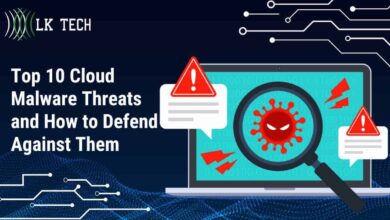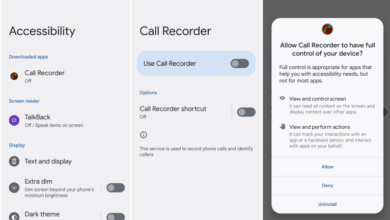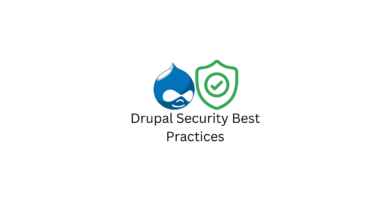
Cyber Attack on American Streaming Media Plex
Cyber attack on American streaming media Plex: Imagine your carefully curated movie collection, your go-to TV shows, all suddenly vulnerable. That’s the chilling reality facing Plex users, and this post dives deep into the potential threats, the ways attackers might target your data, and most importantly, how you can protect yourself. We’ll explore the vulnerabilities of Plex’s architecture, the various cyberattack methods used against it, and the devastating consequences for American users specifically.
Get ready to tighten up your digital defenses!
From malware and phishing scams to denial-of-service attacks, the threats are real and varied. We’ll break down each type of attack, explaining how they work and the damage they can inflict – from stolen media to compromised accounts and even financial losses. We’ll also discuss the role of both the government and the streaming media industry in mitigating these threats and what steps you can take to protect your personal information and valuable media library.
The Nature of Plex and its Vulnerabilities

Plex, a popular media server and streaming platform, allows users to organize and access their personal media libraries from various devices. While offering convenience and flexibility, its architecture and user practices introduce several security vulnerabilities. Understanding these vulnerabilities is crucial for users to protect their data and privacy.Plex’s architecture comprises a server application (typically installed on a user’s home computer or network-attached storage device) and client applications accessible on various platforms like smartphones, smart TVs, and computers.
The server manages the media library, handles metadata, and streams content to the clients. This decentralized structure, while offering benefits like local control, also creates security challenges. The server’s reliance on user-configured security settings and the potential for misconfigurations across diverse client platforms contributes to a larger attack surface.
Common Attack Vectors Targeting Plex Users
Several attack vectors exploit vulnerabilities in Plex software and user practices. These include weak or default passwords, unpatched server software, insecure network configurations, and the use of insecure third-party plugins or apps. Phishing attacks targeting user credentials are also prevalent. Compromised Plex servers can lead to unauthorized access to sensitive media files and potentially other data on the same network.
Malicious actors could exploit vulnerabilities in the server software to gain remote code execution, allowing them to install malware, steal data, or disrupt service. Furthermore, inadequate network security, such as a lack of firewalls or strong encryption, can expose the Plex server to external attacks.
The Decentralized Nature of Plex and its Impact on Cyberattacks
Plex’s decentralized architecture presents a double-edged sword regarding cybersecurity. While it avoids a single point of failure making a complete system shutdown less likely, it also means that each user’s server is an individual target. A successful attack on one user’s Plex server doesn’t necessarily compromise the entire platform, limiting the overall impact compared to a centralized service. However, the dispersed nature of servers makes comprehensive security patching and monitoring challenging.
The responsibility for security largely falls on individual users, increasing the likelihood of vulnerabilities remaining unaddressed. This decentralized nature also complicates the response to large-scale attacks, as coordinated mitigation efforts become more difficult.
Examples of Security Incidents in Similar Media Streaming Platforms
Several security incidents affecting other media streaming platforms have highlighted the importance of robust security practices. For instance, in 2017, a vulnerability in a popular media player allowed attackers to remotely execute code, potentially gaining access to user data and devices. This highlighted the risks associated with outdated software and the importance of regular updates. Other incidents have involved data breaches due to weak password policies or compromised user accounts, demonstrating the critical role of strong password management and multi-factor authentication.
These incidents underscore the need for continuous vigilance and proactive security measures across the media streaming landscape.
Types of Cyberattacks Targeting Plex Users
Plex, while offering a convenient way to manage and stream personal media, unfortunately presents a target for various cyberattacks. The decentralized nature of its operation, relying on user-managed servers and clients, creates vulnerabilities that malicious actors can exploit. Understanding these attack vectors is crucial for Plex users to protect their data and privacy.
Malware Infections
Malware, encompassing viruses, Trojans, and ransomware, can be delivered through various methods, including malicious links disguised as Plex updates or pirated media files. Once installed, this malware can compromise a user’s Plex server, granting attackers access to stored media and potentially allowing them to use the server to launch further attacks against other users or systems. Ransomware, in particular, could encrypt media files, demanding payment for their release.
The effectiveness of this attack depends on the user’s security software and awareness of phishing tactics.
Phishing Attacks
Phishing attacks target Plex users by sending deceptive emails or messages pretending to be from Plex or a related service. These messages may contain malicious links leading to fake login pages designed to steal user credentials. Successfully obtaining login details allows attackers to access the user’s Plex account, potentially modifying settings, deleting media, or distributing malware through the compromised account.
The effectiveness of these attacks hinges on the user’s ability to identify and avoid suspicious communications. Sophisticated phishing campaigns often mimic official Plex branding and communication styles to increase their success rate.
Denial-of-Service Attacks
Denial-of-service (DoS) attacks aim to overwhelm a Plex server with traffic, making it inaccessible to legitimate users. While a direct DoS attack against a single user’s Plex server is less common, distributed denial-of-service (DDoS) attacks targeting Plex’s infrastructure could disrupt service for many users simultaneously. The effectiveness of a DoS attack relies on the attacker’s ability to generate sufficient traffic to overwhelm the server’s resources.
Plex’s infrastructure and user server capabilities are relevant factors in the effectiveness of such attacks.
Man-in-the-Middle Attacks
Man-in-the-middle (MitM) attacks involve an attacker intercepting communication between a Plex client and server. This allows the attacker to eavesdrop on the communication, potentially stealing sensitive information such as passwords or media metadata. It also opens the possibility of manipulating the communication, for example, injecting malware into the stream. The success of a MitM attack relies on the attacker’s ability to position themselves between the client and server, often achieved through compromised routers or public Wi-Fi networks.
Brute-Force Attacks
Brute-force attacks involve systematically trying various password combinations to gain access to a Plex account. While effective against weak or easily guessed passwords, stronger passwords and account lockout mechanisms significantly mitigate this threat. The effectiveness is directly proportional to the complexity of the password and the attacker’s computational resources.
The recent cyberattack on Plex, the popular American streaming media platform, highlights the urgent need for robust cloud security. Understanding how to effectively manage your cloud security posture is crucial, and that’s where solutions like Bitglass come in; check out this article on bitglass and the rise of cloud security posture management to learn more. Ultimately, strengthening cloud security is the key to preventing future attacks like the one targeting Plex and ensuring user data remains safe.
| Attack Type | Potential Impact | Mitigation Strategies |
|---|---|---|
| Malware Infections | Media theft, data corruption, server compromise | Up-to-date antivirus software, careful file downloads, strong passwords |
| Phishing Attacks | Account compromise, credential theft, malware distribution | Careful email scrutiny, strong password practices, two-factor authentication |
| Denial-of-Service Attacks | Service disruption, inaccessibility | Robust server infrastructure (for Plex server admins), strong network security |
| Man-in-the-Middle Attacks | Data interception, malware injection | Using secure VPN connections, avoiding public Wi-Fi |
| Brute-Force Attacks | Account compromise | Strong, unique passwords, account lockout mechanisms |
Impact of a Cyberattack on American Plex Users
A large-scale cyberattack against Plex, a popular American streaming media server, would have far-reaching consequences for its millions of users. The potential impact extends beyond simple data breaches, encompassing significant financial losses, legal battles, and a severe erosion of public trust in both Plex and the broader streaming media landscape. The scale of the damage would depend heavily on the nature and scope of the attack, but the potential for widespread disruption is undeniable.The severity of the impact on American Plex users hinges on several factors, including the type of data compromised (personal information, financial details, media libraries), the attacker’s motives (ransomware, data theft, espionage), and the effectiveness of Plex’s response and mitigation efforts.
A successful attack could lead to a cascade of negative effects, affecting individuals, the company, and the overall confidence in online media services.
Data Breaches and Privacy Violations
A cyberattack could expose sensitive user data, including personally identifiable information (PII) like names, addresses, email addresses, and payment details. This could lead to identity theft, financial fraud, and harassment. Furthermore, the unauthorized access and dissemination of users’ media libraries—potentially containing copyrighted material—raises serious intellectual property concerns, leading to legal ramifications for both Plex and its users. Consider the 2017 Equifax breach, where the personal data of nearly 150 million Americans was compromised, resulting in widespread identity theft and costing the company billions in fines and settlements.
A similar breach impacting Plex’s user base would be catastrophic.
The recent Plex cyberattack highlights the vulnerability of even established streaming services. Building robust, secure applications is crucial, and that’s where understanding the evolving landscape of application development comes in. Check out this article on domino app dev the low code and pro code future to see how advancements in low-code/pro-code approaches can help improve security and efficiency.
Ultimately, strengthening the security of platforms like Plex requires a multi-pronged approach, including better development practices.
Financial Losses and Reputational Damage
Financial losses could stem from several sources. Users might face costs associated with identity theft recovery, credit monitoring, and legal fees. Plex itself could face significant financial losses due to legal liabilities, reputational damage, and the cost of remediation efforts. The loss of user trust could lead to a decline in subscriptions and revenue. The Yahoo data breaches, which exposed billions of user accounts, serve as a stark example of the long-term financial and reputational damage a massive data breach can inflict on a company.
Legal Ramifications for Users and Plex
The legal ramifications could be substantial. Users whose copyrighted material is illegally accessed and distributed could face legal action from copyright holders. Plex could face lawsuits from users for failing to adequately protect their data, and from regulatory bodies for violating data privacy laws. The complexity of assigning liability in such a scenario, coupled with potential class-action lawsuits, could create a protracted and expensive legal battle for all parties involved.
Impact on User Trust and Adoption of Streaming Services
A major cyberattack on Plex could severely erode user trust in the platform and, more broadly, in the security of streaming media services. Users might become hesitant to store their personal information and media libraries online, leading to a decline in the adoption of such services. This loss of trust could benefit competitors who can demonstrate stronger security measures.
The widespread concern about data privacy in the digital age means that even a relatively minor breach can significantly impact a company’s reputation and future growth.
Potential Impacts Categorized by Severity and Likelihood
The following list categorizes potential impacts based on their severity and likelihood:
- High Severity, High Likelihood: Data breaches exposing PII and media libraries; significant reputational damage to Plex; widespread user frustration and distrust.
- High Severity, Medium Likelihood: Large-scale identity theft and financial fraud impacting users; substantial legal costs for Plex and users; regulatory fines and penalties for Plex.
- Medium Severity, High Likelihood: Service disruptions and downtime; temporary loss of access to media libraries; increased cybersecurity measures and costs for Plex.
- Medium Severity, Medium Likelihood: Loss of user subscriptions and revenue for Plex; decreased adoption of streaming services overall; negative media coverage impacting Plex’s brand.
- Low Severity, High Likelihood: Increased user awareness of cybersecurity risks; improved security practices by some users; minor service adjustments by Plex.
Mitigation and Prevention Strategies

Securing your Plex media server is crucial to prevent unauthorized access and data breaches. A proactive approach, encompassing strong passwords, robust authentication, and regular software updates, significantly reduces your vulnerability. This section Artikels a comprehensive security plan to protect your Plex setup and your valuable media library.
Password Management
Strong, unique passwords are the first line of defense. Avoid easily guessable passwords like “password123” or your birthday. Instead, opt for complex passwords combining uppercase and lowercase letters, numbers, and symbols. A password manager can help generate and securely store these complex passwords, ensuring you use a different password for each online account, including your Plex server. Consider using a passphrase—a longer, more memorable phrase—as a strong password alternative.
For example, instead of “P@$$wOrd1”, use “MyFavoriteMovieIsTheShawshankRedemption1994”. Regularly update your passwords, aiming for at least every three months.
Two-Factor Authentication
Two-factor authentication (2FA) adds an extra layer of security by requiring a second form of verification beyond your password. Even if someone obtains your password, they’ll still need access to your secondary verification method, such as a code sent to your phone or email, or an authentication app like Google Authenticator or Authy. Enabling 2FA on your Plex account significantly reduces the risk of unauthorized access, even if your password is compromised.
Activating this feature should be a top priority for all Plex users.
Software Updates
Keeping your Plex Media Server software up-to-date is essential for patching security vulnerabilities. Regular updates often include security fixes that address known exploits. Enable automatic updates whenever possible to ensure you’re always running the latest and most secure version. Additionally, keep your operating system and any other relevant software (like routers and network devices) updated to minimize potential weaknesses that could be exploited.
Network Firewall Configuration
A properly configured firewall acts as a gatekeeper, controlling network traffic to and from your Plex server. By default, your router likely has a built-in firewall. You should configure it to only allow inbound connections on the ports Plex uses (typically port 32400 for unencrypted connections and 32469 for encrypted connections). Restricting access to these specific ports prevents unauthorized access attempts from other ports.
Consider using a more advanced firewall, such as pfSense or OPNsense, for greater control and customization if you have the technical expertise. These firewalls allow for detailed rule sets to further refine access control.
Identifying and Responding to Suspicious Activity
Regularly monitor your Plex account activity for any unusual signs. Check your server’s logs for any unrecognized IP addresses or unusual login attempts. Be wary of emails or messages claiming to be from Plex, requesting login information or password resets. Plex will never ask for your password via email. If you suspect unauthorized access, immediately change your password, enable 2FA if you haven’t already, and review your Plex server’s logs for any suspicious activity.
Consider contacting Plex support if you need further assistance.
The Role of Government and Industry in Addressing Cyber Threats to Streaming Media

The rise of streaming media has brought unparalleled convenience, but it has also created a lucrative target for cybercriminals. Protecting this vital part of our digital infrastructure requires a collaborative effort between government agencies and the private sector, each playing a crucial role in ensuring the security and privacy of users. A robust and coordinated response is essential to mitigate the risks and maintain public trust.The responsibility for safeguarding citizens from cyberattacks targeting streaming media platforms rests largely with the government.
This involves several key actions.
Government Responsibilities in Protecting Streaming Media
Government agencies have a vital role in establishing and enforcing cybersecurity regulations for streaming services. This includes setting data privacy standards, mandating security protocols, and conducting regular audits of these platforms. Furthermore, governments should invest in research and development of cybersecurity technologies to help protect against emerging threats. Effective collaboration with international organizations to share threat intelligence and best practices is also crucial.
The government’s role also extends to providing resources and education to help citizens protect themselves from cyber threats, such as phishing scams and malware targeting streaming accounts. Failure to address these issues adequately leaves citizens vulnerable to significant financial and personal data losses. Examples include the enactment of data breach notification laws and the funding of cybersecurity awareness campaigns.
The Streaming Media Industry’s Role in User Security and Privacy
The streaming media industry itself bears a significant responsibility for the security and privacy of its users’ data. This responsibility encompasses proactive measures to identify and mitigate vulnerabilities within their platforms. This includes investing in robust security infrastructure, implementing strong authentication and authorization mechanisms, and regularly updating software to patch security flaws. Transparent data privacy policies that clearly Artikel how user data is collected, used, and protected are also essential.
Companies must also actively monitor their systems for suspicious activity and have incident response plans in place to handle security breaches effectively. Netflix’s multi-layered security approach, including encryption and intrusion detection systems, serves as a positive example. Failure to uphold these responsibilities can result in data breaches, financial losses for users, and significant reputational damage for the companies involved.
Collaboration Between Government and Industry, Cyber attack on american streaming media plex
Effective cybersecurity in the streaming media landscape requires strong collaboration between government agencies and the private sector. This partnership can take several forms. Information sharing between government cybersecurity agencies and streaming companies about emerging threats is critical. Joint initiatives to develop and implement cybersecurity standards and best practices can enhance overall security. Government support for cybersecurity research and development can lead to innovative solutions that benefit both the public and private sectors.
Furthermore, coordinated responses to large-scale cyberattacks are essential to minimize damage and ensure a swift recovery. For example, the collaboration between the Cybersecurity and Infrastructure Security Agency (CISA) and major technology companies in the US demonstrates the effectiveness of this approach.
Stakeholder Relationships in Addressing Cyber Threats
A visual representation would depict a network diagram. At the center is a representation of the streaming media platform (e.g., a stylized Plex logo). Lines radiate outward connecting to various stakeholders: Government agencies (e.g., CISA, FBI), industry organizations (e.g., MPAA, representing the interests of the streaming industry), individual streaming services (Netflix, Hulu, Plex), users, and cybersecurity firms.
The thickness of the lines could represent the strength of the relationship and the frequency of information sharing. Arrows indicate the flow of information and responsibility, showing the government providing regulations and guidance, the industry implementing security measures, users practicing safe online habits, and cybersecurity firms offering expertise and services. This diagram illustrates the interconnectedness and shared responsibility in maintaining the security of the streaming media ecosystem.
Conclusion: Cyber Attack On American Streaming Media Plex
The threat of a cyberattack on Plex, and streaming services in general, is a serious one. While the decentralized nature of Plex offers some level of resilience, individual users remain vulnerable. By understanding the potential attack vectors, implementing strong security practices, and staying informed about emerging threats, we can significantly reduce our risk. Remember, your digital security is your responsibility.
Take control, protect your data, and enjoy your streaming without fear!
Question & Answer Hub
What is Plex?
Plex is a popular media server and streaming application that allows users to organize and access their personal media libraries from various devices.
Can a Plex attack expose my personal information beyond my media files?
Yes, depending on the type of attack and your account security, attackers could potentially access your email address, password, and other personal information linked to your Plex account.
How often should I update my Plex server software?
Regularly! Check for updates frequently, as these often include crucial security patches.
What should I do if I suspect my Plex account has been compromised?
Immediately change your password, enable two-factor authentication, review your connected devices, and report any suspicious activity to Plex support.





